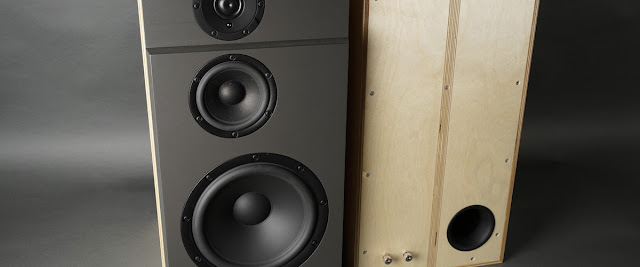The 3-Way Classic, update 1.
I don't know what I was thinking when designing and building the active filter in part 8 of the 3WC build! I mean Rod Elliott has already made a perfect design in his P81 so why on earth didn't I just build it? I have no idea but my first attempt had some serious flaws.
First off, no way to adjust the levels between HF and LF. No problem if you use two different power amps with means to level match the HF and LF, especially since LF is an eight Ohms load and HF a four Ohms in this build. But also the inverted LP buffer on Rods design, it made me appreciate phase coherence.
I had a Rod Elliott P09 laying around. Not 600 Hz but close enough to keep me going. I was considering rebuilding it into a second order filter (the P09 board can be built as a fourth or second order Linkwitz–Riley) since a second order looked better in my simulations. The problem with the P09 board was real estate. It would be really nice if I could make a board that would fit inside the "Faraday cage" I built for the first board. So I decided to make a new board modeled after Rods P81 and keep it as compact as possible.
Not as good looking as the first one but more compact than a P09. The new board is the one in the middle. The fist one to the left and a P09 to the right.
The good news is that the new board works perfectly. The trim pots on the filter can be used instead of the bass enhancement network on the input buffer (on my first board). Design and etch your own or buy a P09 board from Rod and use it as a foundation. I designed my board without the 6 dB gain in the HP out buffer. It is not needed with my 3WC since HF is already up some 3 dB because of the four Ohms vs. LF eight Ohms load.
This is the schema I ended up using (click for higher resolution). Use NE5532 for U1-U5 if you don't have a better idea. I went with NJM2068DD for U1-U3 and NE5532P for U4 & U5.
What you need to do if you build this speaker with an active filter like that is to keep the correct polarity of the bass and mid-range and reverse the polarity of the tweeter. You also need to level match HF and FL. If you run a four channel power amp like me, measure for example LP at 1 V and then use the trim pot on the filter to attenuate HP 3 dB (it should read around 0.71 V). The speaker will now measure quite flat, at least between 200 Hz and 3 kHz. It will then be 1-2 dB down between 4 kHz and 12 kHz. It is back up again between 14 kHz and 18 kHz with a dip down 1 dB until it reaches 20 kHz. I wish I could share my indoor measurements but my old Windows laptop hung before I had a chance to save my session. I didn't have time for near field measurements so below 200 Hz is still a bit of an unknown.
Never trust your ears, always measure your build. My 3WC finally measure flat enough for me to invite some friends over for a first listening session. :)








